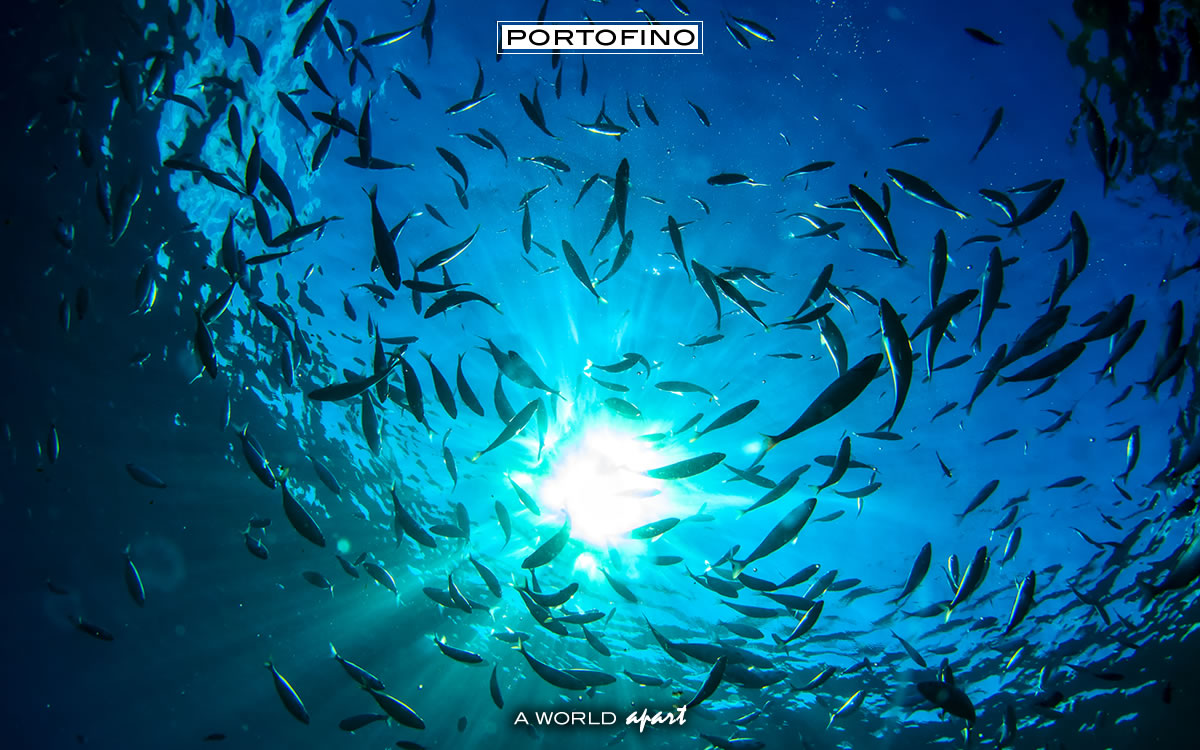
The position of Portofino has made fishing one of the most antique professions in the world. Before 1700, this category of people dedicated themselves to fishing coral. With tiny boats, called “leudi”, they went west to the island of Gallinara and to the deep sea of Provenza, their next-door neighbors, so to speak, from Rapallo, and San Giacomo of Corte took their coralline boats and went towards the Sardinia west coasts. The story says that the natives of Portofino had a secret, about (the different spots on the nautical chart) called “poste”, that is the “armie” (nautical points), a secret that was handed down from father to son, and from the old sea captains of `700: these secrets were robbed by the Portofino sailors who had gone fishing coral with the Catalan searchers already in ‘600.
Families existed in the Quay that from immemorial times have constantly carried out the fishing profession as though it was a business: they were the owners of the certain spot fishing, this work was very interesting and functioned throughout the year, because the port existed, not like the other neighboring places. When the anchovy season began to approach, that is May-June, when the sea and the weather are usually calm, who owned the biggest fishing boat armed with a Latina sail started out to “make the season” to the Gorgona island, supplied with special wooden barrels for the “salting” of the anchovies. On the contrary spot fishing with nets, was carried out for a certain quantity of fish, with the “sciabega“, that is the net pulled by the fishing boat for other qualities: always in the various spots other equipment was used for different qualities of fish, for example mullet, white anchovy, cuttlefish, aguglie( edible fish), coneri (another edible fish) and other equipment for fishing from the “surface”, that is in eye’s view.
This work was very appreciated because it brought about other economic categories, it involved other people and, therefore other families: from boat joiners to adjustors, to the girls who armed and repaired the nets and other essential accessories used for the profession; furthermore, when there was more demand for labor, especially during the fishing season exhisted a “call” like they used at Genoa on ships like the “Corve“, for the people waiting for work: two types of fishing were used contemporarily.
It is not possible to write a historical list of who used this type of economy because in those times a naval register of sport fishing boats and rowing boats didn’t exist, but it’s possible to remember a man in our memories, or rather bring a list of names of men and boats, thanks to their children, starting with the registration of the Harbour Office, called “a Sanite”. 1- Antonio called “To” and G. B. called “Bai” Merello, said to be “Baracchetti”, with their boat “Veloce” 2- Camillo Forte and nephews Gaetano and Mario Mussini, with their boats “Anna V.” and “Emilia” 3- Domenico Prato called “Moaning Mini”, with his boat the “Nuova Maria”. 4- Giorgio Viacava called “u Brassin”, with his boat “San Giorgio”, that became his sister’s Teresa, said to be “Pittella” or “Tiri”. 5- Luigi Viacava called “Luigiluigi”, with his boat “Libero”. 6- Carmelo Carbone called “Carmelin”, with his boat “Divina Provvidenza”. 7- Giovanni Prato and nephews Giorgio and Attilio Costa called “Razaulla”, with his boat “San Giuseppe”. 8- Giovanni Bosetti called “u Pagin”, with his boat “Diavolo”. 9- The Carniglia family, “u Gianco” called “Rivani”, today Nando and Bartolomeo called “Bertume”, with their boat “Adele”. 10- Luigi Viacava called “Figaro”, with his boat “Nicoletta”. 11- Carlo Rosselli called “Carluccio”, son-in-law of “Menelik”, with his boat “Bagodo”. 12- Nicola Viacava called “u Tripoli”, with his boat “Nicolin”.
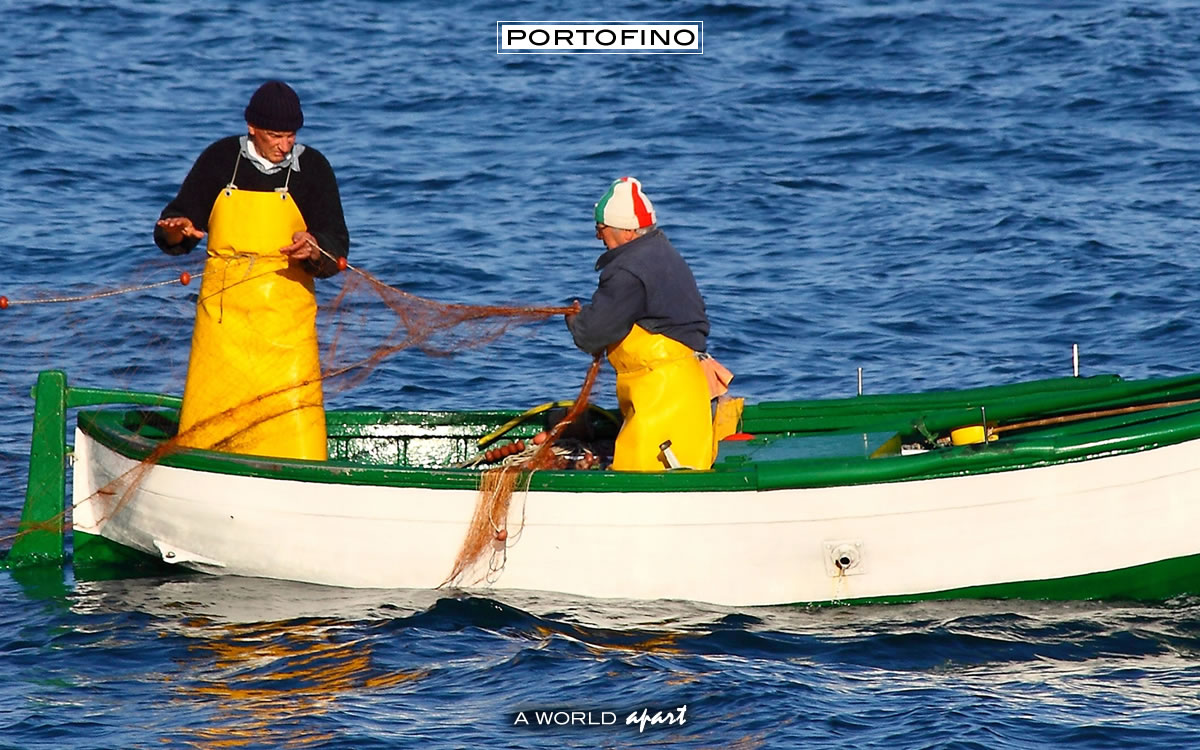
Only four well-equipped fishermen are with us today, also because the way of fishing has radically changed, not only for the type of equipment used but also for the quality of fish which can be sold, that is lobster, bassfish and other fish of high quality: in fact, the type of fish fished a long time ago, today isn’t sold because of small demands. The names of the four fishermen are 13- Guido Giardina called “u Ferrao”, a very good lobster fisher and an expert in fish equipment: he did, in fact, invent a “practice” to increase fishing without ruining the equipment. His boat is called “Moro”. 14-“Nando carniglia called “Rivano”, with his boat “Angela”. 15-Antonio Traverso called “u Vutrin” or “u Tramba”, with his boat “Pulin picin”. 16- Emanuele de Barbieri called “Cuxian”, with his boat “Lorenzo”. These ways of fishing came, and went, along the coast, and the right to fish consented in the limits of the Commune water territory, they fixed the nets to the ropes that were tied to the rocks, every rock was given a name, since antique times: the custom was that every rock was used in turn with clear instructions by the people who frequented them, and as I will be speaking about the rod fishers, I want to write the name of the rocks where the net and rod spots were.
Leaving Cervara, and going towards Portofino up to the point of San Fruttuoso where they used the regulated fishing, there were: 1- The Scala dei Frati (The monk’s port of call), where Portofino had a right to fish tuna and cetacean with special nets called “bastinea”; 2- The Carega (Chair); 3- The Forno (Oven); 4- The Punta del Castello (The Castle Point) 5- The Scalinata di Menestra (Menestra steps) 6- The Punta di Niasca (Niasca Point); 7- Niasca. At Portofino two fishing boats existed, therefore the fishermen of Portofino were given permission to go to Cervara and those of Paraggi to go to “Carega Point”. Paraggi had the priority of fishing until sunset. The two boats were “il Volo” of the Crovos and the Carbones, my grandfather, and the “Baracchetta”, of Agostino Sacco called “Ostinin”. 8- Tre Pini (Three Pines), or the spot called “musea”, that is the fishing net for the mullets; 9- Manzo (Beef); 10- Cajega (Seat); 11- Anello (Ring); 12- Tana del Prete (The Priest’s Den), spot for the fishing boat nets; 13- The Man; 14- The Cannone (Cannon), that had three functions, a spot for the fishing boat nets, for the nets and for the “conero” (lobster pot); 15- Secche delle Menole (Menole Surface Rocks); 16- Piede dell’Oca (Goose Feet); 17- The Sanita; 18- The Putella, spot for the “musea”; 19- Punta del Coppo (Rope’s Point); 20- Cassi; 21- Posta dell’Olivetta (Olivetta’s Spot), that had three functions using fishing boat, nets and lobster pot; 22- The Cavallo (Horse); 23- Punta dell’Olivetta (Olivetta’s Point); 24-Battaglia (Battle); 25- Segaiolo; 26- Secca di Pun (Pun’s Rock); 27- Pigna (Pine); 28- The Grillo (Cricket); 29- Punta del Faro (point of the Lighthouse); 30- The Muschio (Musk) ; 31- The Inferno (Hell); 32- Sciusciello; 33- The Nave (Ship), 34- Scoglietto (Tiny Rock); 35- Fossa dei Gatti (Cats Hole); 36- The Banche (Banks); 37- Tacca della Baracchina (Hut’s Mark); 38- Cadea; 39- Santa Ga (St. Ga); 40- Tognia; 41- Vitrale; 42- dalla Madonna (from the Virgin Mary); 43- Martinello; 44- Secche del Cane (Dog’s Surface Rocks) 45- Cianetta (Plain); 46- Punta del Ghiaccio (Ice Point); 47- Vexinaro; 48- Rapallina (from Rapallo); 49- Altare (Altar); 50- Buexin; 51- The Scarmo (Row Lock); 52- The Fasce (Terraces); 53- Deruau; 54- Scoglio di Alfredo (Alfredo’s Rock); 55- Rufinale; 56- Secche delle Capre (Goat’s Surface Rocks); 57- Punta di Rufinale (Rufinale’s Point); 58- sotto Grinda (under Grinda); 59- Sant’Angelo (Saint Angel); 60- Scoglio dei Muggini (Mullet’s Rock) 61- The Ravioli; 62- The Grotta (Cave); 63- Punta di San Fruttuoso (San Fruttuoso’s Point).
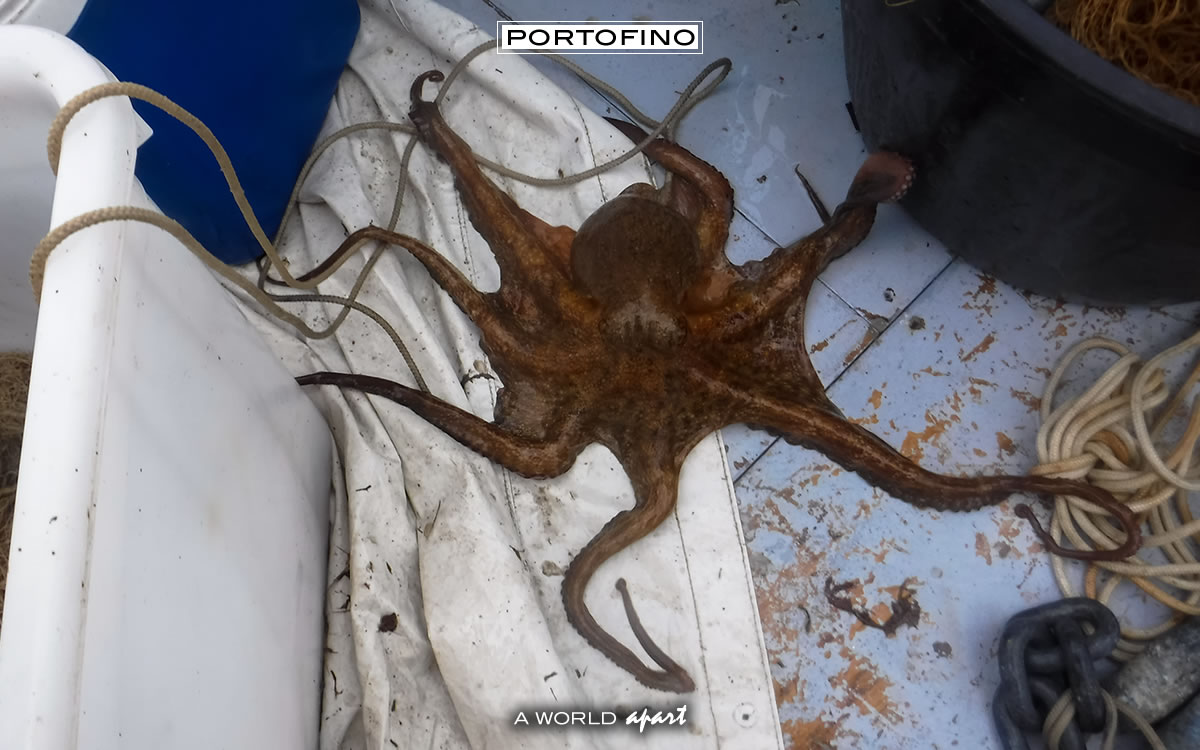
Amongst all these spot names, there exists an exclusive place for fishing with nets, and the spot was drawn daily by the fishermen from the Lighthouse point at Cajega: who commanded the shift was the most hard-working, and when the others found out there were more fish, “they asked for a shift”: this fisherman could choose the spot that offered more fish, the others were given their spots drawn from a hat. All the names of the fishing spots were written on a piece of paper and thrown into a hat.
This system was also used for mullet fishing and “sciabega” and “conero” fishing. Depending on the season, for the rod fishermen there was a rule “who arrives first”, They changed spots amongst themselves, leaving the fishing rod, bucket, and bread ready for fishing: if the bread was dry, the spot was considered to be illegally occupied, if it was wet the spot was rightly occupied and couldn’t be “claimed” by anyone. These rules, not written, but decided by voice, were considered a custom, legal by the Harbour Office, and any protests had to be made to the District Commander who then decided what to do.
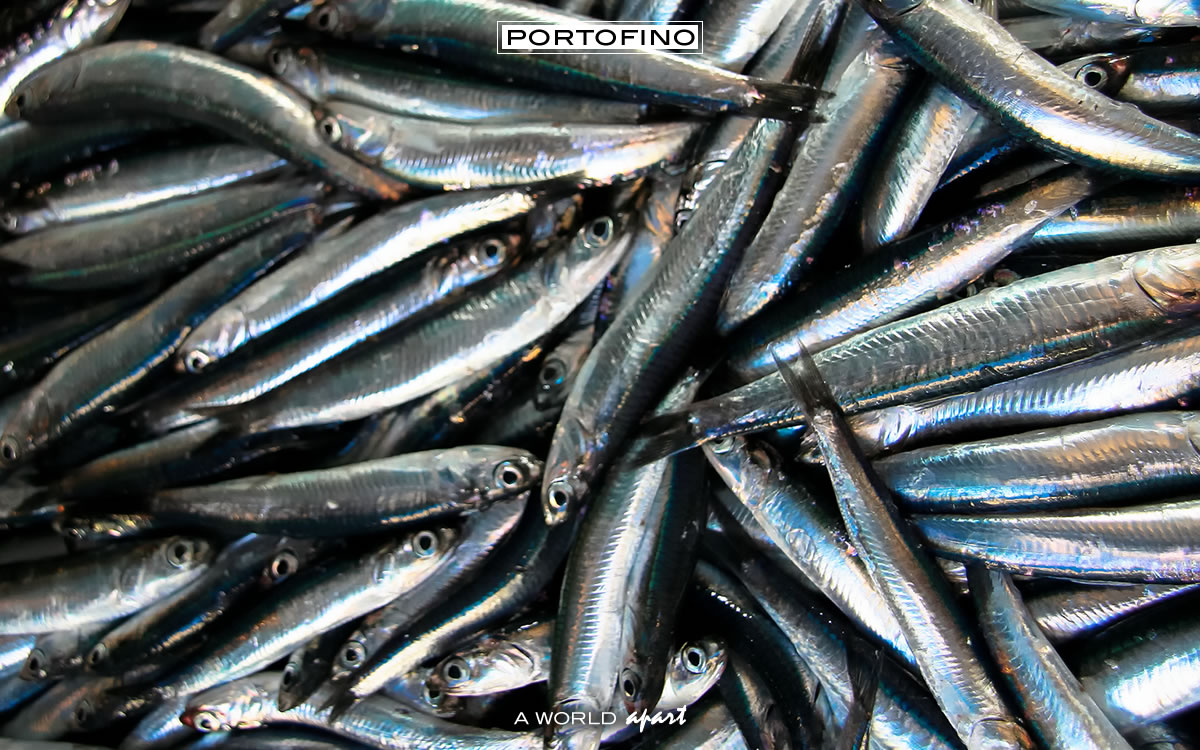
THE SELLING OF FISH AND THE MARKET
The people of the Mount sold their fish together with other home products directly to the houses, whilst the Village people sold with lever scales, on the benches around the square: the fisherman who was selling at that moment shouted the quality of the fish to inform everybody that the market had opened. When fish advanced at Portofino, the remains were sent to other squares in the Gulf; who rowed during the night to Rapallo, who went to different parts of the country, and who went normally to San Giacomo di Corte in Santa Margherita, where there were two warehouses with two women fish sellers for the market: I want to tell you their names to demonstrate how the Ligurian perseverance awards who has initiative. With the event of the railway and the motor road, the goods were transported quickly: they arrived easily to the city markets, and consequently, it was possible to increase the quantity of fish. Two families were important in the Genoese commerce, first by train, after with their own transport: they were Angiolina Carbone married to Bardi called “la Camelia”, and Emilia Carbone married to Figari called “Mida”.
These two women of Santa Margherita Ligure already frequented the Genoese squares for the commerce of lace pillows: one of these, Camelia, sensed the possibility of a new activity, having two pieces of ground under the porticos of Corte in T. Bottaro street, where the center of the fish market existed that came from Portofino and from the fisherman of Santa Margherita. These women were very active and experts in their profession, they were very capable at the city markets, exporting the local fish and importing the best fish asked for by the public exercises, such as restaurants. Camelia, who first sold only lace pillows at Genoa, was the first to guess that this important business to and from Genoa would have become of dual importance between the fish and lace trade. She had organized so well the business that her ancestors, first Andrea and Agostino, today Gianni and Giuseppe Bardi, continued the business with ability and experience, adapting to our times, becoming importers and exporters at an international level, and acquiring a large commercial territory in Liguria. The fisherman’s activity was practiced regulary up until the end of the second world war and continued with success until our fathers lived, that is the end of the fifties: tourism went ahead and seamanship was occupying the fishermen’s space so that people were obligated to change work to be able to survive. Thanks to Giovanni Carbone.
Portofino, a World apart.
